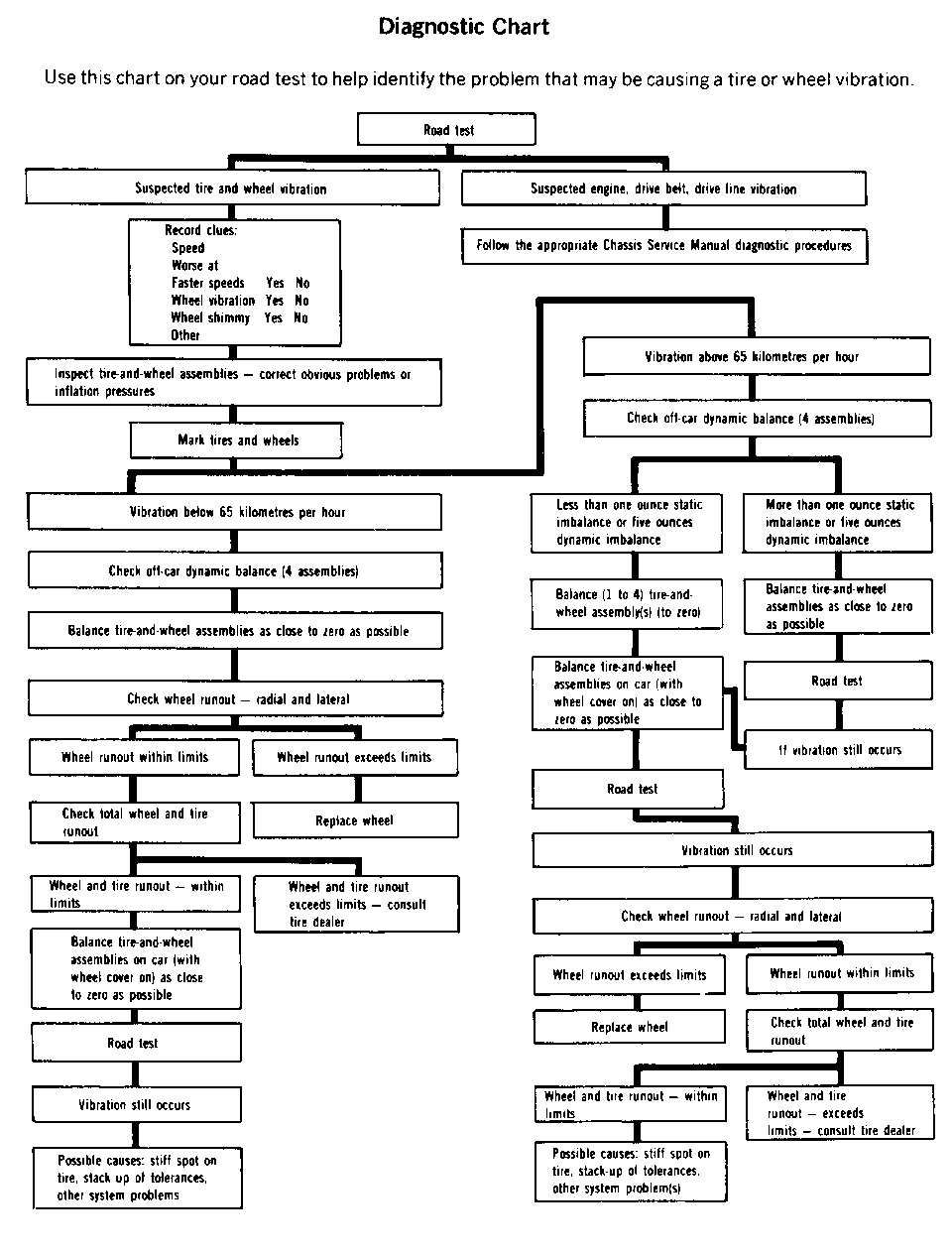TIRE AND WHEEL VIBRATION DIAGNOSIS PROCEDURE

VEHICLES AFFECTED: All Carlines, All Years, All Models -----------------------------------
You can solve any tire or wheel vibration problem if you have two things: a "take charge" attitude, and a thorough diagnosis. Don't rely on a tire dealer until you know for sure it's a bad tire. Be thorough and diligent; don't rush through the diagnostic procedure. It's most important and can save you lots of time in the long run.
"TAKE CHARGE" ATTITUDE
Correcting tire and wheel vibration is not always a cut and dried routine service procedure. There are a number of vehicle systems that can cause a symptom your customer might interpret as a tire and wheel vibration. Don't dismiss a vibration complaint or blame it on the tire company. You don't want to send a customer on an unecessary trip to a tire dealer. What you do want is a customer who knows you will take the time to analyze the problem thoroughly and professionally; a customer who knows you will fix it right the first time, or you will come up with another solution. In other words, the only customers you want to leave your Service Departments are Satisfied Customers.
If the "other solution" happens to be a new tire, go ahead and work with a local tire dealer or the tire supplier* and arrange to have the tire replaced. You will then have the satisfaction of knowing your cuutomer was well taken care of, the problem was solved and you provided the best service possible.
DIAGNOSTIC DIRECTION
The first step in diagnosing tire and wheel vibration problems is a road test. Drive the car with the customer to be sure you understand the complaint. Your objective during the road test is to isolate the system that is causing the problem. If you confirm a vibration, look for clues. (See "Diagnostic Chart").
Fifty percent of tire and wheel vibrations are caused by tire and wheel imbalance. Some of the other fifty percent may be caused by excessive wheel and/or tire runout,** or drive line vibration.
While on the road test, drive the vehicle at a steady highway speed, then shift the transmission to neutral and vary the engine speed. If the vibration remains constant, check the driveline for loose universal joints or a missing drive shaft weight. Once these causes have been ruled out, look for tire and wheel vibration clues.
If a low speed, side to side waddle is felt in the whole car, treat it as a wheel and tire vibration. Because wheel vibration transfers, you will probably have to inspect all four wheels for imbalance.
* Reference Bulletin 1984, 0-108 * * Reference Bulletin 1983, 3-110

General Motors bulletins are intended for use by professional technicians, not a "do-it-yourselfer". They are written to inform those technicians of conditions that may occur on some vehicles, or to provide information that could assist in the proper service of a vehicle. Properly trained technicians have the equipment, tools, safety instructions and know-how to do a job properly and safely. If a condition is described, do not assume that the bulletin applies to your vehicle, or that your vehicle will have that condition. See a General Motors dealer servicing your brand of General Motors vehicle for information on whether your vehicle may benefit from the information.
